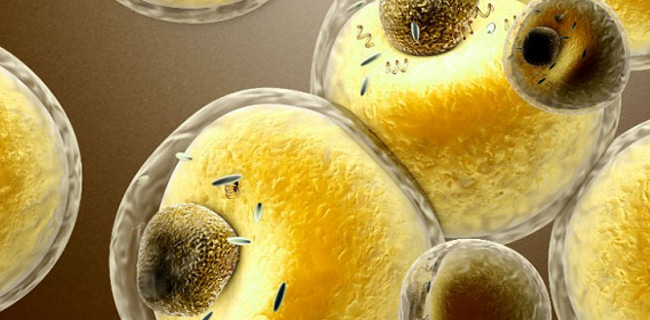
Many patients with advanced stages of cancer, AIDS, tuberculosis, and other diseases die from a condition called cachexia, which is characterized as a “wasting” syndrome that causes extreme thinness with muscle weakness. Cachexia is the direct cause of roughly 20% of deaths in cancer patients. While boosting food intake doesn’t help, and no effective therapies are available, new research in the Cell Press journal Cell Metabolism points to a promising strategy that may stimulate weight gain and muscle strength.
The research relates to a process that has been gaining considerable attention as a way to combat obesity: the browning of white fat. While white fat normally stores calories, brown fat burns them and generates heat in the process. Therefore, efforts to turn white fat into brown fat may help people lose weight.
Erwin Wagner, of the Spanish National Cancer Research Centre in Madrid, and his colleagues found that in mice and patients with cancer-associated cachexia, white fat undergoes significant changes and turns into calorie-burning brown fat. The transformation leads to increased energy consumption and organ wasting.
The team also discovered that inflammation plays an important role in turning white fat into brown fat during cancer-associated cachexia, which suggests a potential therapeutic target. Indeed, anti-inflammatory therapies, including the nonsteroidal anti-inflammatory drug (NSAID) Sulindac, ameliorated the severity of cachexia in mice.
“Our data suggest that inhibition of the browning of white fat represents a promising approach to ameliorate the severity of cachexia in cancer patients,” says Dr. Wagner. “In addition, identifying biomarkers of browning at early stages of cancer development could help to predict which patients are going to develop cachexia and are good candidates to benefit from a preventive treatment.”